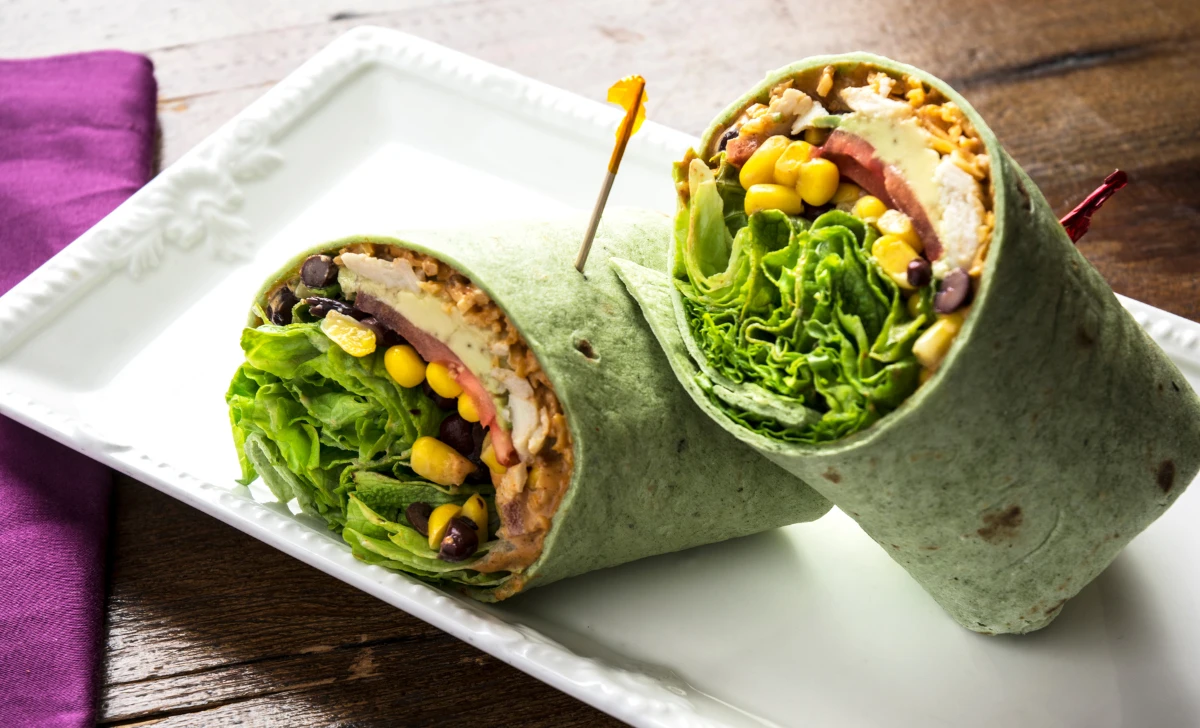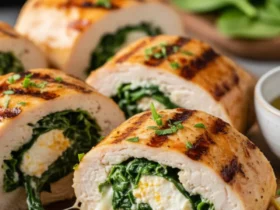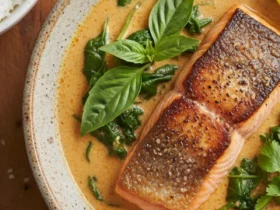Are you craving a flavorful and nutritious meal that is quick and easy to make? Look no further than a delicious falafel wrap! Originating from the Middle East, falafel wraps have gained popularity worldwide for their satisfying taste and versatility. In this article, we will guide you through a step-by-step process of creating a homemade falafel wrap that is bursting with flavors and packed with wholesome ingredients. So, let’s dive in and discover how you can prepare this delectable dish in the comfort of your own kitchen.
[ez-toc]
History
The falafel wrap, a beloved Middle Eastern dish, has a rich history that spans centuries. This delectable combination of crispy falafel balls, fresh vegetables, and flavorful sauces wrapped in soft pita bread has become a global sensation. Let’s embark on a journey through time and explore the fascinating history of falafel wraps.
Ancient Origins
The origins of falafel can be traced back to ancient Egypt, where a precursor to falafel known as “ta’amia” was consumed. Ta’amia was made using fava beans instead of chickpeas, which are more commonly used today. The ancient Egyptians discovered the art of grinding legumes into a paste and then frying or baking them, creating a nutritious and filling food source.
Spread across the Middle East
From Egypt, the concept of falafel traveled across the Middle East, gaining popularity in countries such as Lebanon, Syria, Israel, and Palestine. Each region added its own unique touch, leading to variations in ingredients and flavors.
In the Levant region, particularly Lebanon, falafel is traditionally made with a combination of chickpeas, fresh herbs, and spices. The mixture is shaped into small balls and deep-fried to perfection. The Lebanese falafel is renowned for its vibrant green color and delicate balance of flavors.
In Israel and Palestine, falafel is commonly served in a pita bread along with a variety of fresh vegetables, pickles, and tahini sauce. This combination of textures and tastes has become the quintessential falafel wrap enjoyed by people around the world.
Global Popularity
During the 20th century, with the migration of Middle Eastern communities to various parts of the world, falafel gained international recognition. Major cities like New York, London, and Paris saw the emergence of falafel stands and restaurants, introducing this flavorful street food to a wider audience.
The popularity of falafel wraps skyrocketed due to their vegetarian nature, making them a favorite among those seeking plant-based alternatives. As the world embraced diverse culinary traditions, the demand for falafel wraps grew, and it became a staple in many multicultural cities.
Adaptations and Innovations
While the traditional recipe for falafel remains cherished, there have been adaptations and innovations over time to suit different palates and dietary preferences. Some variations include using different legumes like fava beans or a combination of chickpeas and fava beans. Others experiment with additional ingredients such as spinach, beetroot, or sweet potatoes, resulting in unique falafel flavors and colors.
Furthermore, the accompanying sauces and toppings have evolved, allowing individuals to customize their falafel wraps according to personal preferences. From the classic tahini sauce to vibrant chili pastes and zesty yogurt-based dressings, the possibilities for flavor combinations are endless.
Modern Culinary Delight
Today, the falafel wrap has become a beloved street food delicacy worldwide. It is not only relished by Middle Eastern communities but has also captivated the taste buds of people from diverse cultural backgrounds. Its appeal lies in the harmonious blend of textures, flavors, and the convenience of a handheld meal.
Whether enjoyed as a quick lunch on the go or savored as a hearty dinner, the falafel wrap continues to tantalize taste buds with its crispy exterior, tender interior, and the medley of fresh ingredients bursting with flavors.
Time
| Step | Time |
|---|---|
| Soaking the Chickpeas | 8 hours |
| Making the Falafel Mixture | 10 minutes |
| Shaping the Falafel Balls | 15 minutes |
| Frying the Falafel Balls | 15 minutes |
| Heating the Pita Bread or Wraps | 2 minutes |
| Adding the Falafel and Toppings | 5 minutes |
Note: The cooking and preparation times provided are approximate and may vary depending on individual cooking skills and kitchen equipment.
Ingredients
| Ingredients | Quantity |
|---|---|
| Dried Chickpeas | 1 cup |
| Fresh Parsley, finely chopped | 1/2 cup |
| Fresh Cilantro, finely chopped | 1/2 cup |
| Small Onion, finely chopped | 1 |
| Garlic Cloves, minced | 3 |
| All-Purpose Flour | 2 tablespoons |
| Ground Cumin | 1 teaspoon |
| Ground Coriander | 1 teaspoon |
| Baking Soda | 1/2 teaspoon |
| Salt and Pepper | To taste |
| Vegetable Oil | For frying |
| Pita Bread or Wraps | 2 |
| Lettuce, Tomato, Cucumber, and Pickles | As desired |
Note: The ingredient quantities listed are for a serving size of 2 people. Adjust the quantities accordingly for more or fewer servings.
Directions
Soaking the Chickpeas
- In a large bowl, place the dried chickpeas and cover them with water.
- Allow the chickpeas to soak overnight or for at least 8 hours.
- After soaking, drain the chickpeas and rinse them thoroughly.
Making the Falafel Mixture
- In a food processor, combine the soaked chickpeas, finely chopped parsley, finely chopped cilantro, finely chopped onion, minced garlic cloves, all-purpose flour, ground cumin, ground coriander, baking soda, salt, and pepper.
- Pulse the mixture until it forms a coarse paste with small chunks of chickpeas.
- Transfer the mixture to a bowl and let it rest in the refrigerator for 30 minutes to an hour.
Shaping the Falafel Balls
- Take a small portion of the falafel mixture and roll it between your hands to form a compact ball.
- Repeat the process until all the falafel mixture is used, aiming for approximately 1-inch diameter balls.
Frying the Falafel Balls
- Heat vegetable oil in a deep frying pan or pot over medium-high heat.
- Carefully place the falafel balls into the hot oil, ensuring they are fully submerged.
- Fry the falafel balls until they turn golden brown and crispy on the outside, usually taking about 3-4 minutes per batch.
- Once cooked, remove the falafel balls from the oil and place them on a paper towel-lined plate to absorb any excess oil.
Heating the Pita Bread or Wraps
- If using pita bread, gently warm it in a toaster or oven until it becomes soft and pliable.
- If using wraps, you can heat them in a dry skillet for a few seconds on each side to make them more flexible.
Adding the Falafel and Toppings
- Lay the heated pita bread or wrap on a clean surface.
- Place a few falafel balls in the center of the bread.
- Add fresh lettuce, sliced tomatoes, cucumbers, and pickles on top of the falafel.
- Drizzle your favorite sauces, such as tahini sauce or a tangy yogurt dressing, over the toppings.
Serving Suggestions
- Serve the falafel wraps immediately as a delicious and satisfying meal.
- Accompany them with a side of fresh salad or tabbouleh for a complete and nutritious experience.
- Enjoy them with a refreshing mint lemonade or your favorite Middle Eastern beverage.
Note: Feel free to customize your falafel wraps with additional toppings and sauces according to your preference.
Equipment Required
Nutrition Information
| Nutrition Information | Per Serving |
|---|---|
| Serving Size | 1 wrap |
| Calories | 350 |
| Total Fat | 12g |
| – Saturated Fat | 1.5g |
| – Trans Fat | 0g |
| Cholesterol | 0mg |
| Sodium | 600mg |
| Total Carbohydrate | 50g |
| – Dietary Fiber | 8g |
| – Sugars | 4g |
| Protein | 12g |
| Vitamin D | 0% |
| Calcium | 6% |
| Iron | 20% |
| Potassium | 10% |
Note: The nutrition information provided is an estimate and may vary depending on specific ingredients and brands used.
Tips
- Use dried chickpeas: While canned chickpeas can be used as a shortcut, using dried chickpeas that have been soaked overnight will result in a better texture and flavor for the falafel.
- Ensure proper consistency: The falafel mixture should be slightly coarse and not overly smooth. This texture helps the falafel hold its shape during frying.
- Refrigerate the mixture: Allowing the falafel mixture to rest in the refrigerator for 30 minutes to an hour helps the flavors meld together and improves the texture.
- Check the oil temperature: Maintain the oil temperature around 350°F (175°C) while frying the falafel balls. This ensures even cooking and prevents them from becoming greasy.
- Use a deep-frying thermometer: A thermometer can help you monitor and maintain the oil temperature accurately for perfectly cooked falafel.
- Drain excess oil: After frying the falafel balls, place them on a paper towel-lined plate to absorb any excess oil and keep them crisp.
- Experiment with herbs and spices: Feel free to add your favorite herbs and spices to the falafel mixture for a personalized touch. Dill, mint, or a dash of cayenne pepper can add an extra layer of flavor.
- Bake instead of frying: For a healthier alternative, you can bake the falafel balls in the oven at 375°F (190°C) for about 20-25 minutes, flipping them halfway through.
- Get creative with toppings: While the classic toppings include lettuce, tomatoes, cucumbers, and pickles, you can experiment with additional toppings like sliced onions, shredded carrots, or roasted bell peppers.
- Explore sauce variations: Along with tahini sauce, try other condiments like garlic sauce, hot sauce, or a tangy mango chutney to add a unique twist to your falafel wrap.
- Make it gluten-free: Use gluten-free flour or a gluten-free alternative like chickpea flour to ensure the recipe is suitable for those with gluten sensitivities or allergies.
- Make-ahead falafel: You can prepare the falafel mixture ahead of time and refrigerate it for up to 24 hours. This allows for easier meal planning and quicker assembly when you’re ready to cook and serve.
- Freeze extra falafel: If you have leftover falafel balls, you can freeze them in an airtight container for future use. Just reheat them in the oven or microwave before enjoying.
Pros & Cons
| Pros | Cons |
|---|---|
| ✔️ Delicious and flavorful | ❌ Requires overnight soaking of chickpeas |
| ✔️ Vegetarian and vegan-friendly | ❌ Time-consuming preparation process |
| ✔️ Versatile and customizable | ❌ Deep-frying may be less healthy |
| ✔️ Packed with plant-based protein | ❌ Potential for falafel balls to fall apart during frying |
| ✔️ Middle Eastern culinary delight | ❌ Some ingredients may not be readily available in all areas |
Conclusion
In conclusion, the falafel wrap recipe offers a delightful culinary adventure that combines the vibrant flavors of the Middle East with the convenience of a handheld meal. With its crispy falafel balls, fresh vegetables, and flavorful sauces, this dish is not only delicious but also vegetarian-friendly, making it suitable for a wide range of dietary preferences.
By following the step-by-step instructions and incorporating your favorite toppings and sauces, you can customize the falafel wrap to your liking, making it a truly personalized culinary creation. Whether you’re a fan of Middle Eastern cuisine or simply looking to try something new and flavorful, the falafel wrap is a must-try recipe that will satisfy your taste buds and leave you wanting more.
So, gather the ingredients, soak the chickpeas overnight, and embark on a culinary journey to create your very own falafel wraps. Whether enjoyed as a quick lunch, a delicious dinner, or even as party appetizers, these wraps are sure to impress your family, friends, and most importantly, your taste buds. Give it a try, and let the flavors of the Middle East transport you to a world of culinary delight.
Facts
- 🌱 Fact 1: The Versatile Chickpea
- Did you know that chickpeas, the main ingredient in falafel, have been cultivated for over 7,000 years? They were one of the earliest crops grown in the Middle East and have since spread worldwide, becoming a staple in various cuisines.
- 🌍 Fact 2: A World Record Falafel
- In 2012, Lebanon broke the Guinness World Record for the largest serving of falafel, weighing a whopping 5,173 pounds (2,346 kilograms). That’s equivalent to the weight of around 10 small cars!
- 🎉 Fact 3: A Celebratory Dish
- Falafel has become a popular food during festivities in many Middle Eastern cultures. It is commonly served during celebrations such as weddings, birthdays, and religious holidays, adding a touch of joy and flavor to the festivities.
- 💡 Fact 4: Falafel’s Veggie Cousins
- While chickpeas are the traditional base for falafel, different countries have their own versions with unique legumes. For example, in Egypt, ta’amia is made with fava beans, and in Sudan, ful medames is a similar dish made with cooked broad beans.
- 🌟 Fact 5: An Out-of-This-World Connection
- In 2019, NASA included falafel on its menu for astronauts aboard the International Space Station (ISS). This Middle Eastern delicacy traveled beyond our planet, offering astronauts a taste of Earth’s diverse cuisine while in orbit.
FAQ’s
Can I use canned chickpeas instead of dried chickpeas for the falafel mixture?
While you can use canned chickpeas as a shortcut, using dried chickpeas soaked overnight will yield the best texture and flavor.
Can I bake the falafel instead of frying them to make them healthier?
Yes, you can bake the falafel balls in the oven at 375°F (190°C) for about 20-25 minutes, flipping them halfway through, for a healthier alternative to frying.
Are falafel wraps gluten-free?
The main ingredients of falafel, such as chickpeas and herbs, are gluten-free. However, ensure that the wraps and sauces you use are also gluten-free if you require a gluten-free option.
How can I prevent the falafel balls from falling apart during frying?
Ensure that the falafel mixture is well chilled and has the right consistency. If needed, add a bit more flour to bind the mixture. Additionally, handle the falafel balls gently when frying.
Can I prepare the falafel mixture in advance?
Yes, you can prepare the falafel mixture ahead of time and refrigerate it for up to 24 hours. This allows for easier meal planning and quicker assembly when you’re ready to cook and serve.
How long can I store cooked falafel balls, and how should I store them?
You can store cooked falafel balls in an airtight container in the refrigerator for up to 3 days. Reheat them in the oven or microwave before serving.
Can I freeze the falafel balls?
Yes, you can freeze the cooked falafel balls. Place them in an airtight container or freezer bag and freeze for up to 3 months. Thaw in the refrigerator before reheating.
What are some common toppings and sauces to enhance the flavor of falafel wraps?
Common toppings include lettuce, tomatoes, cucumbers, pickles, and sauces like tahini sauce, tzatziki sauce, or hummus. Feel free to customize with your preferred flavors.
Can I make the falafel mixture without onions and garlic?
Yes, you can omit onions and garlic from the mixture. However, they contribute to the flavor profile of the falafel. Consider adding alternative seasonings or herbs to enhance the taste.
How can I serve falafel wraps for a party or gathering?
To serve falafel wraps as appetizers, cut the wraps into smaller portions, secure with toothpicks, and arrange them on a platter. Offer a variety of sauces and toppings for guests to customize their wraps.












Leave a Review